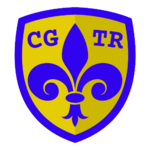Topeka Runaway Disaster
This article is incomplete, as it is a part of a work-in-progress series of articles covering the fictional railroad CGTR and related topics. This article is being worked on by user SwedishTurtles, and may be temporarily missing information. Please comment on this article's talk page to share your input, comments and questions. Note: To contribute to this article, you may need to seek help from the author(s) of this page. |
| Topeka Runaway Disaster | |
|---|---|
| Details | |
| Date | 27 November 1994 4:45 AM |
| Location | Topeka, Kansas |
| Country | |
| Operator | Central Gateway Turtle Railroad |
| Incident type | Runaway train and derailment |
| Cause | Brake line leak |
| Statistics | |
| Trains | 1 |
| Passengers | 867 |
| Crew | 3 |
| Pedestrians | 5 |
| Deaths | 178 |
| Injuries | 309 |
| Damage | 1 GP40FH-2 8 Bi-level coaches |
| This article is part of a series on the |
| CGTR |
|---|
 |
The Topeka Runaway Disaster was a railway accident that occured on November 27, 1994, in Topeka, Kansas, when CGTR's Thundering Lapis—containing 8 bi-level passenger coaches and being pulled by CGTR #1, an EMD GP40FH-2—would fly off of a bend at 77 miles per hour (124 km/h), crushing 2 cars, derailing all 9 cars and locomotives, and killing 178 people and injuring 309 more after losing control due to a brake line leak.
The accident was named after the city it took place in—Topeka, Kansas—and would become the most deadly train wreck in American history, surpassing the Great Train Wreck of 1918 by 77 deaths.
Background
In 1998, 6 years prior to the incident, the Central Gateway Turtle Railroad would make a strategic decision to replace EMD F40PHs #1–3 with newer models, EMD GP40FH-2s. In the eyes of the CGTR, this transition seemingly marked another upgrade to more modern and efficient locomotives for hauling their esteemed passenger trains.
Initially, the transition went quite smoothly, and the three new EMD GP40FH-2s effectively pulled the Thundering lapis for a good 6 years without encountering any significant issues. Be that as it may, in 1994, a critical oversight would occur during a routine inspection on locomotive #1.
Due to an inadequate inspection, the maintenance crew responsible for locomotive #1 would fail to identify a corrosion problem on the locomotive’s Westinghouse 26 brake line. This corrosion, which had likely developed over time due to humidity and exposure to corrosive agents, would go unnoticed.
The brake line on a locomotive plays a key position in the pneumatic braking system of a locomotive. Any corrosion or damage to this line can compromise the braking system, which can lead to braking deficiencies or even a complete brake failure.
Accident
At 3:35 AM, the Central Gateway Turtle Railroad's Thundering Lapis, consisting of 8 coaches containing a total of 867 passengers and being pulled by GP40FH-2 #1, would depart from Kansas City, Missouri, to begin its trek to Topeka, Kansas. The train was relatively short, compared to its usual, quite large haul, due to its early departure time intended for commuters.
The train would make its way over to Topeka, going an average of 59.98 miles per hour (96.53 km/h). At 4:40 AM, the train would approach the Topeka station, 5 minutes ahead of schedule. As the train reached the downhill stretch directly before the station, the engineer would pull the brake lever to slow the train, using the air brakes.
Although the brake was pulled, the locomotive and its 8 coaches would begin to gain speed, reaching 65 miles per hour (105 km/h) by 4:41 AM. As the locomotive continued downhill, it would eventually reach a full maximum speed of 77 miles per hour (124 km/h) by 4:43 AM, when it would be seen flying through the station. The engineer would attempt to at-least decrease the speed of the locomotive by using the dynamic brake, though this would just lead to the dynamic brake overheating and becoming unusable.
After passing through the station, the train would reach a bend with a limit of 40 miles per hour (64 km/h) at 4:45 AM. The bend was on a bridge, parallel to a street, where 3 cars would be stopped at an intersection. The locomotive would fly onto the bridge, still going a full 77 miles per hour (124 km/h) and unable to slow down.
As the train began to attempt to take the curve, eyewitnesses say it could visibly be seen tipping almost 8 degrees before all 8 cars and the locomotive would flip off the tracks, crushing the intersection and all 3 cars and killing a total of 178 people.